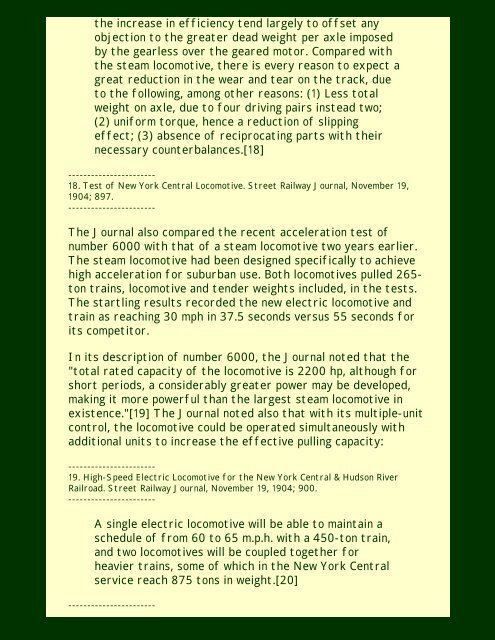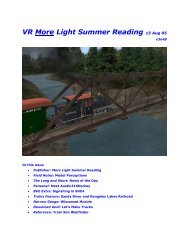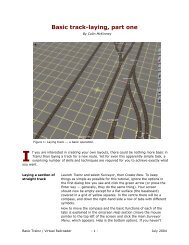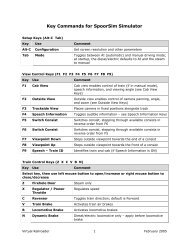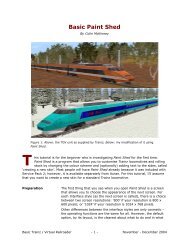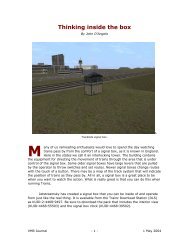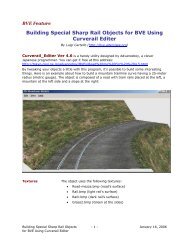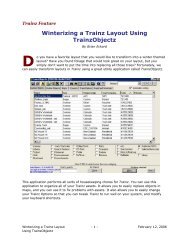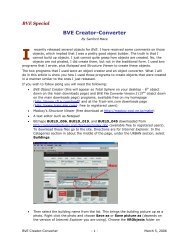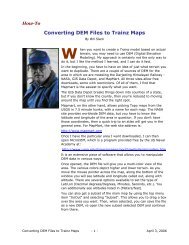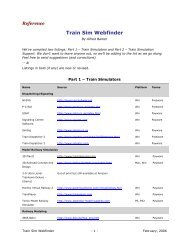Old Maude, Preface - Virtual Railroader
Old Maude, Preface - Virtual Railroader
Old Maude, Preface - Virtual Railroader
Create successful ePaper yourself
Turn your PDF publications into a flip-book with our unique Google optimized e-Paper software.
the increase in efficiency tend largely to offset any<br />
objection to the greater dead weight per axle imposed<br />
by the gearless over the geared motor. Compared with<br />
the steam locomotive, there is every reason to expect a<br />
great reduction in the wear and tear on the track, due<br />
to the following, among other reasons: (1) Less total<br />
weight on axle, due to four driving pairs instead two;<br />
(2) uniform torque, hence a reduction of slipping<br />
effect; (3) absence of reciprocating parts with their<br />
necessary counterbalances.[18]<br />
-----------------------<br />
18. Test of New York Central Locomotive. Street Railway Journal, November 19,<br />
1904; 897.<br />
-----------------------<br />
The Journal also compared the recent acceleration test of<br />
number 6000 with that of a steam locomotive two years earlier.<br />
The steam locomotive had been designed specifically to achieve<br />
high acceleration for suburban use. Both locomotives pulled 265-<br />
ton trains, locomotive and tender weights included, in the tests.<br />
The startling results recorded the new electric locomotive and<br />
train as reaching 30 mph in 37.5 seconds versus 55 seconds for<br />
its competitor.<br />
In its description of number 6000, the Journal noted that the<br />
"total rated capacity of the locomotive is 2200 hp, although for<br />
short periods, a considerably greater power may be developed,<br />
making it more powerful than the largest steam locomotive in<br />
existence."[19] The Journal noted also that with its multiple-unit<br />
control, the locomotive could be operated simultaneously with<br />
additional units to increase the effective pulling capacity:<br />
-----------------------<br />
19. High-Speed Electric Locomotive for the New York Central & Hudson River<br />
Railroad. Street Railway Journal, November 19, 1904; 900.<br />
-----------------------<br />
A single electric locomotive will be able to maintain a<br />
schedule of from 60 to 65 m.p.h. with a 450-ton train,<br />
and two locomotives will be coupled together for<br />
heavier trains, some of which in the New York Central<br />
service reach 875 tons in weight.[20]<br />
-----------------------


